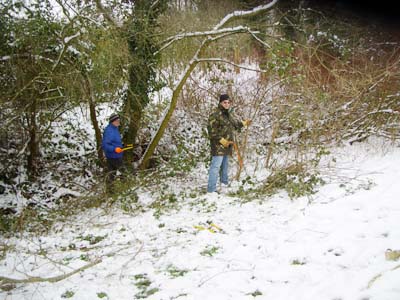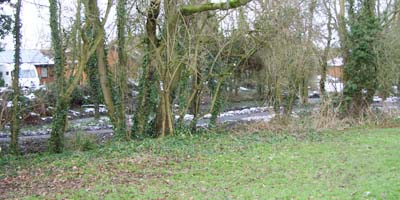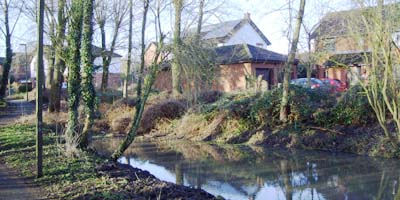With snow on the ground and the temperature hovering around zero, you might be forgiven for thinking that late January 2013 was not a good time to be wading thigh deep in the murky waters of the Stonehill pond – but the members of TMAEG are built of sterner stuff.
Although it was literally necessary to break the ice before the work could commence, the envisaged problems of getting cold very quickly did not materialise and tremendous progress was made with a very early ‘spring clean’ for the Ashbrook Pond.
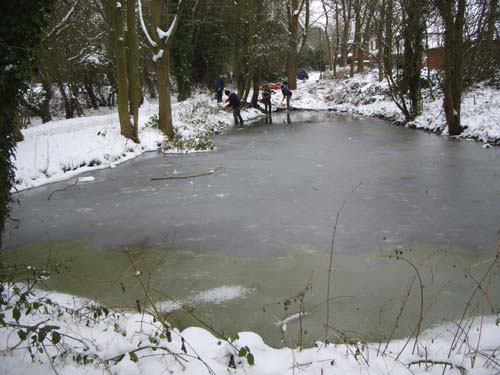
Twelve months ago we did the first clean-up of the pond and it was decided that we should repeat the exercise this year, rather than allow debris to continue to accumulate that could block the inlet pipe and cause the pond water to stagnate. Dates were agreed for Milton Keynes Green Gym to join us in the exercise, with members of both groups turning out on both the Thursday and Saturday sessions.
The Thursday turnout was sufficient to allow a number of different activities to be tackled. In addition to making a start on the pond clearance, the brambles and vegetation along the line of the brook were thinned to allow more light in around the pond, and additional glades were created to attract wildlife.
However, it was the pond clearance team that raised the greatest “stink”. The vegetation that had fallen to the bottom during the last twelve months had decayed sufficiently that at least one worker was reminded of the smells emitted from school chemistry labs, when “bad egg gas” (hydrogen sulphide) was being created.
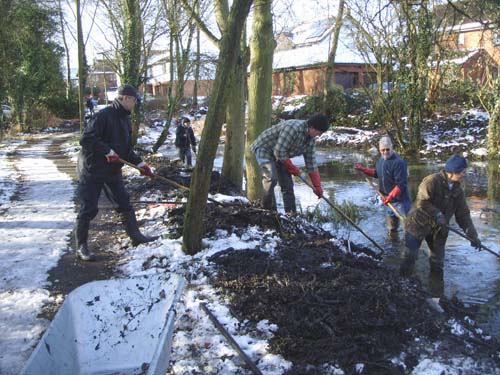
In addition to the accumulated vegetable matter, we unearthed (if such is valid for water) the usual collection of bottles and cans, plus an electric drill – which probably needed more than a new fuse to return it to working order.
Although some additional scrub clearance was completed on the Saturday, this session concentrated on the pond work when, as well as completing the bottom clearance, we tried to remove as much of the surface greenery as possible. This entailed scooping the weed (Lemna minor, common duckweed) into butterfly nets which, with the addition of icy water became very heavy, very quickly. While piles of the green weed were quickly added to the vegetation debris around the pond, there looked to be just as much on the surface afterwards as there was when we started – although that is probably just my imagination.
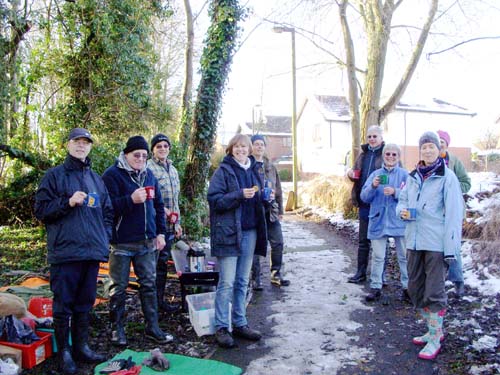
Many thanks to everyone who turned out to help. We look forward to seeing you again on the next event.
Dave Barratt
